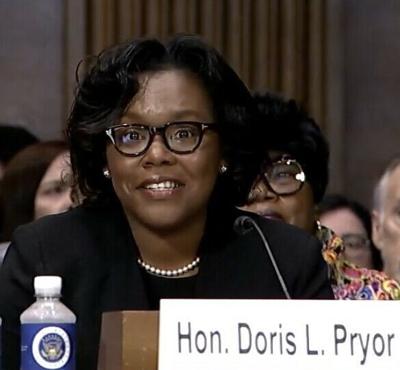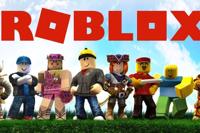
U.S. Seventh Circuit Court of Appeals Judge Doris Pryor
A federal appeals panel has agreed to uphold an Indiana “buffer law,” which bars people, including journalists, from approaching police engaged in official duties.
The state code in question imposes criminal penalties on any person who intentionally or knowingly approaches an officer “lawfully engaged in the execution of the law enforcement officer’s duties after the law enforcement officer has ordered the person to stop approaching.”
South Bend Citizen journalist Donald Nicodemus filed a federal lawsuit against the city seeking a declaration the law is unconstitutional as a violation of the First Amendment right to record police in public spaces. U.S. District Judge Damon Leichty, after consolidating Nicodemus’ request for preliminary injunction with a trial on the merits, and with the state’s intervention, upheld the law because its effect on First Amendment rights was only incidental.
Nicodemus challenged that ruling before the U.S. Seventh Circuit Court of Appeals. Judge Doris Pryor wrote the panel’s opinion, filed May 15; Justices Michael Brennan and Candace Jackson-Akiwumi concurred.
According to court records, Nicodemus runs the “Freedom 2 Film” YouTube channel. While he was livestreaming police response to a shots fired incident in July 2023, an officer approached a crowd of onlookers, invoked the buffer law — which took effect not three weeks earlier – and told those gathered to move 25 feet away from a squad car. During a second but nearby incident, a different officer again asked a group to move.
In seeking the injunction, Nicodemus argued the law “gives unbridled discretion to law enforcement officers to create a 25-foot buffer zone with no guidance,” Pryor wrote. “In addition, Nicodemus maintained that the law is not narrowly tailored to serve a significant government interest and does not leave open ample alternative channels of communication, in violation of First Amendment precedent.”
Pryor said the panel rejected the “apparently shared premise” that the buffer law, once invoked, lets police move anyone within 25 feet back to a point outside the radius. The panel noted the code language hinges on the verb “approach” and doesn’t empower officers to order onlookers to move.
“In other words, the buffer law is not a force field,” Pryor wrote. “Nor does the law say anything about video recording. If ordered to stop approaching, one does not violate the buffer law by stopping one’s advance, staying put, and, if recording, continuing to record.”
After establishing the applicability of First Amendment rights to the issue, Pryor said the buffer law appears to regulate conduct and not speech content. Nicodemus argued the “unbridled discretion” afforded to police raises a content concern. The panel rejected that position, noting physical movement of an onlooker triggers the law, not any speech or message, and said Indiana’s law “covers only conduct — approaching within 25 feet of an officer after being told not to — instead of speech.”
Nicodemus also attempted to invoke “a special line of cases dealing with permitting and licensing statutes in public forums,” Pryor wrote, which have resulted in findings that certain policies aren’t content neutral if the decision maker has unbridled discretion. But in Indiana, the panel said, police don’t have the right to deny recording or assembly altogether, which means the law “operates in a more nuanced way than the binary nature of licensing or permitting schemes. Although the denial of a permit could limit altogether one’s ability to engage in protected activity, the invocation of Indiana’s buffer law could not.”
The panel further found the state has reasonable justification for the law regarding officer and bystander safety as well as “conversational privacy between witnesses and investigating officers, and the desire to improve law enforcement efficiency by reducing distractions. None of these justifications relate to the content of any impacted speech, including potential video recordings.”
Nicodemus failed to convince the panel the buffer law is substantially more burdensome than necessary and that it fails by not specifying when it can be invoked. The panel noted the ease of compliance by simply not moving as well as the established principle that officers can’t force dispersal based only on people exercising their right to record.
“The Indiana buffer law, at most, directs someone to stop approaching,” Pryor wrote. “Therefore, a videographer within 25 feet of an officer may remain in place and keep recording under the buffer law, or even move to a different location, so long as they are not ‘approaching’ the officer after the officer has ordered them to stop.”
To the extent the law does restrict the right to record, Pryor concluded, it is reasonable under the First Amendment. Whether the officers who ordered him to move misapplied the law or violated his own First Amendment rights was not at issue on appeal.
Nicodemus has been represented in the case by attorneys Stevie J. Pactor and Gavin M. Rose and others with the ACLU of Indiana, of Indianapolis.
The city of South Bend has been represented by attorneys Matthew S. Clark and Joseph W. Smith, of the firm of Knight Hoppe Kurnik & Knight, of Rosemont, Illinois, and Merrillville, Indiana.








